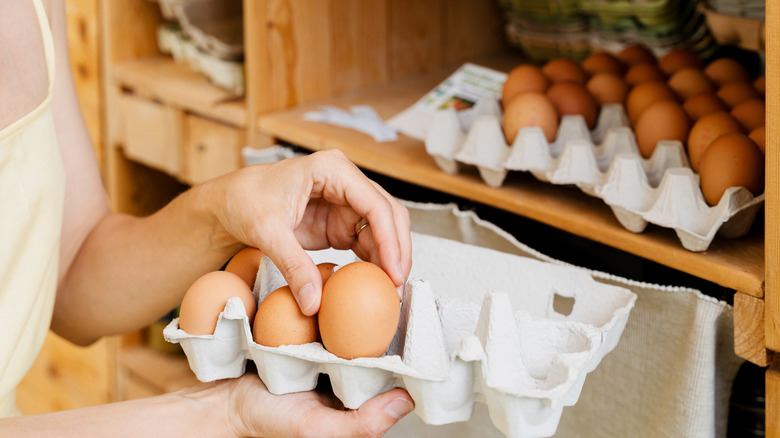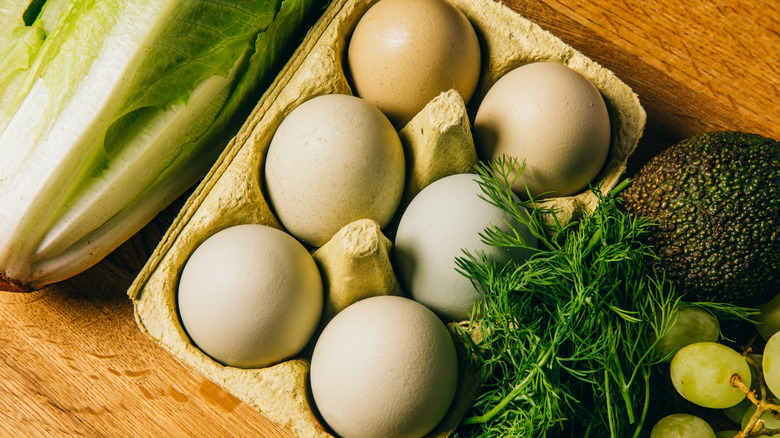What It Means When An Egg Has A Wrinkled Shell — And When It's Actually Safe To Eat
It doesn't get much simpler than eggs; just crack open the shell, and the possibilities are endless. You could fry them Gordon Ramsay-style, whisk them in a bowl and cook gently for soft, fluffy scrambles, or poach them to make a classic eggs Benedict, and if you've got a sweet tooth, try poaching them with a dash of maple syrup for sweeter results. They're pretty foolproof, but every now and then you might crack open your carton to find a wrinkled egg, and that's where things can get a little more interesting. To find out more about this strange phenomenon, Food Republic consulted Lindsey Chastain, founder of The Waddle and Cluck, who revealed that wrinkled egg shells are "more related to the hen than the egg."
A wrinkled egg is usually caused by factors that disrupt the shell formation process, she told us. When an egg is forming, the shell is the last layer to develop, built up by calcium carbonate. If this process is rushed, disrupted, or the chicken is calcium-deficient, the shell may not have time to form, leading to a wrinkled appearance. According to Lindsey, "Anomalies are caused by low calcium, an aging hen, a stressed out hen[,] or some type of egg laying disruption like the hen lays two eggs or lays the egg at an odd time in the process of egg formation."
While aesthetically unappealing, "The shell can be deformed[,] but the inside could be perfectly fine," Lindsey explained. As the shell is the last part to develop, important elements like the yolk and white would have already formed healthily, making the egg perfectly safe to use.
How to tell if your eggs are safe to eat
While most wrinkled eggs are usually safe to consume, there are some signs you should be looking out for in all of your eggs before cracking on. According to Lindsey Chastain, "Any egg, regardless of what the shell looks like, should not be used if it has a bad odor." As is the case with most perishable foods, a bad smell is a reliable indicator of spoilage. In the case of eggs, a strong sulfur-like odor comes from gases released by bacteria that are decomposing the interior of the eggs.
A wrinkled shell is not a definite sign of spoilage, but other shell anomalies might indicate that the egg is not safe to consume. "Other things to look out for on the shell are cracks that can be pressed in easily[,] or if the shell is leaking or sticky," Lindsey explained. The shell acts as a natural barrier that locks bacteria out while keeping moisture in. If the shell is damaged, its interior becomes vulnerable to contamination and spoilage. In these cases, "it's probably bad unless the damage just happened," she advised. Another shell anomaly can be its color. If your egg's weight feels off, as in it's lighter than the others in your carton, "it may not have formed a yolk or the shell was compromised and lost the contents or dried out," Lindsey explained.
In any case where you're doubting the quality of your eggs, "a good rule of thumb is to always crack farm fresh eggs or malformed eggs one by one into a small bowl to check for freshness," Lindsey advised. Other potential signs of spoilage include discolored yolks or a watery consistency. Of course, you can try the water float test, but that just tells you the size of the air bubble inside — not if it's good or not.


